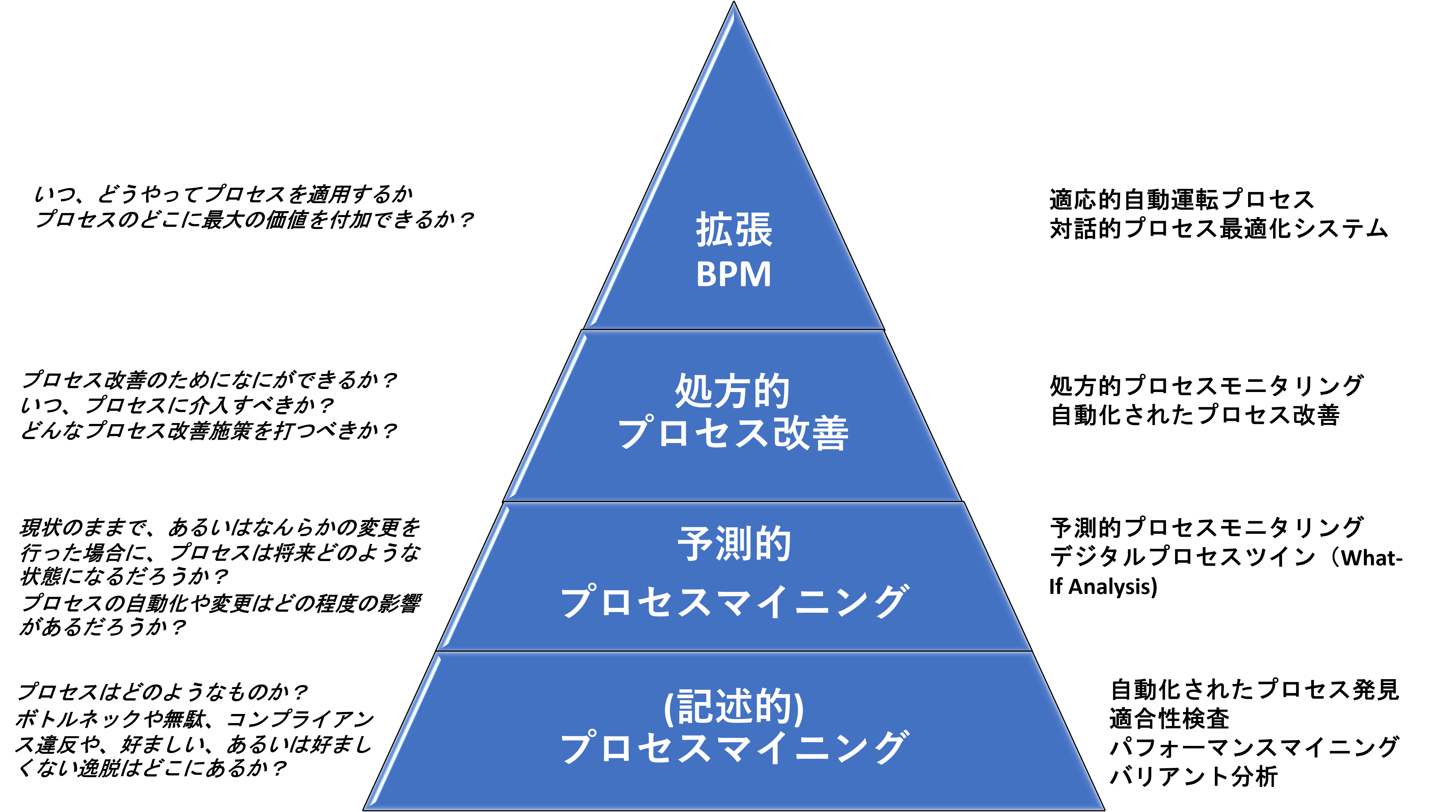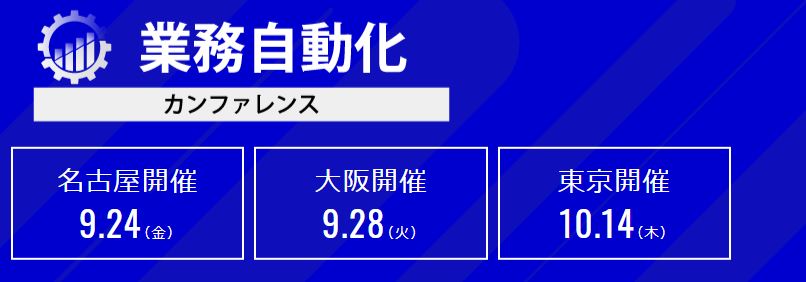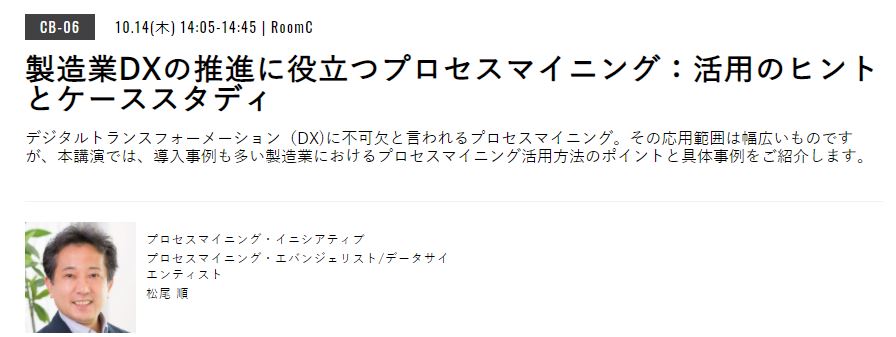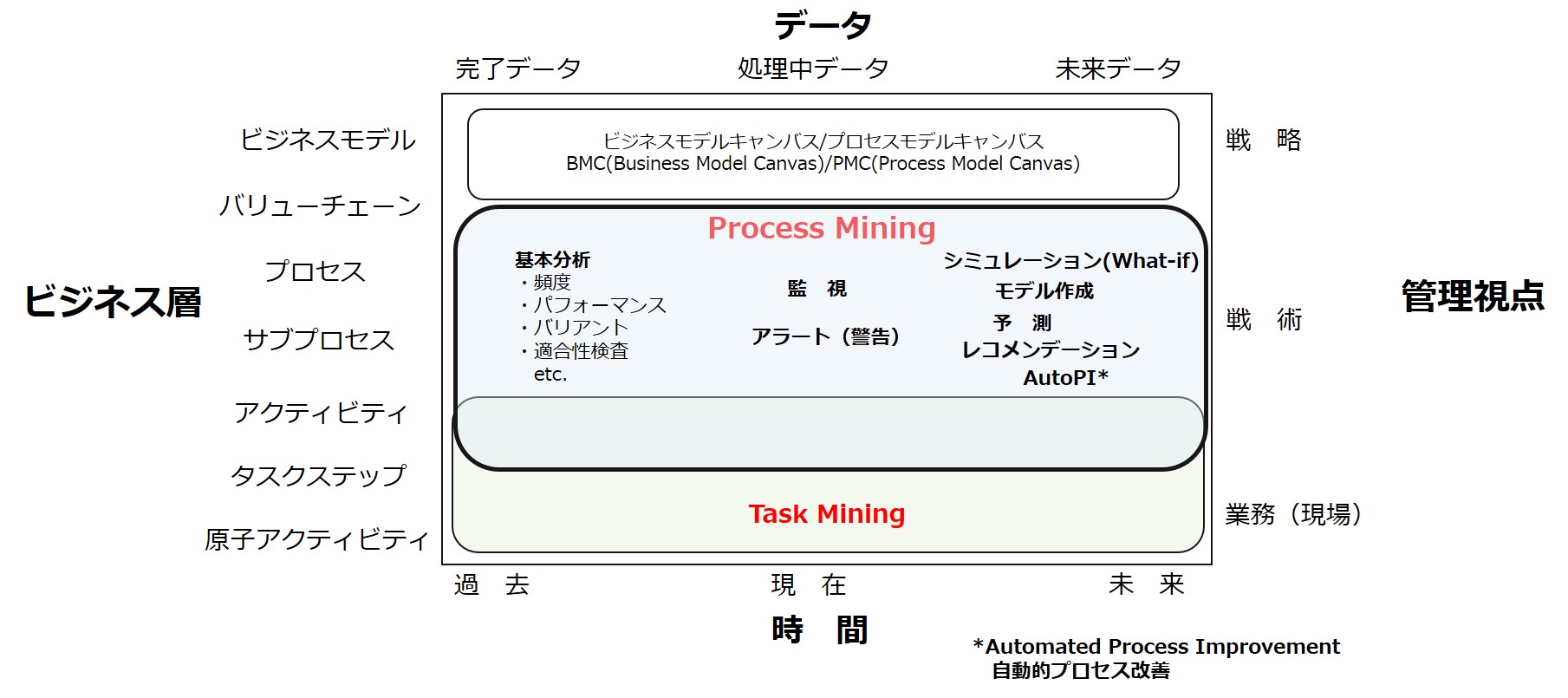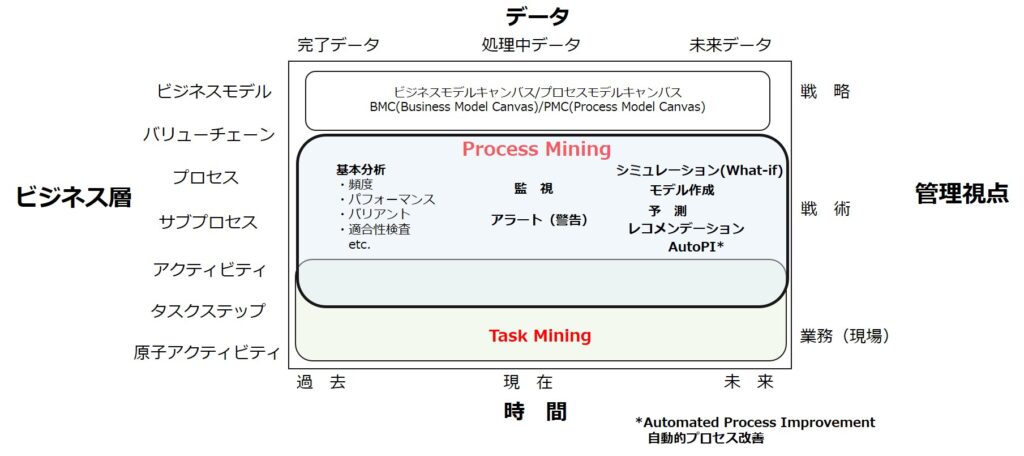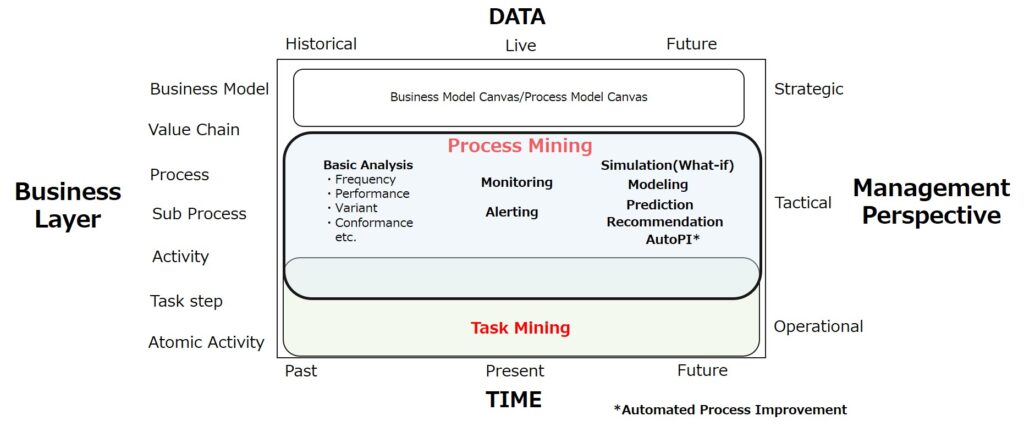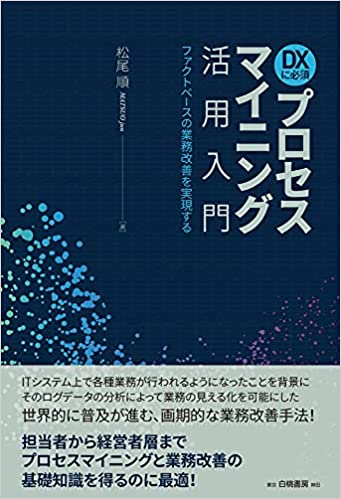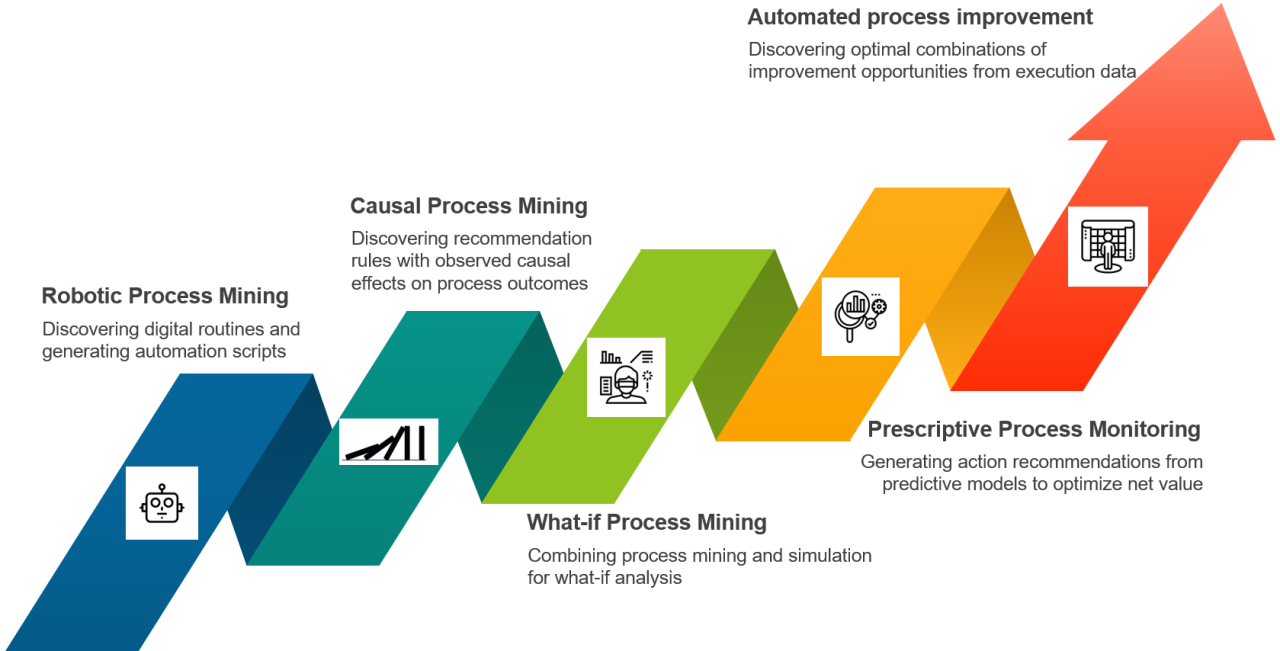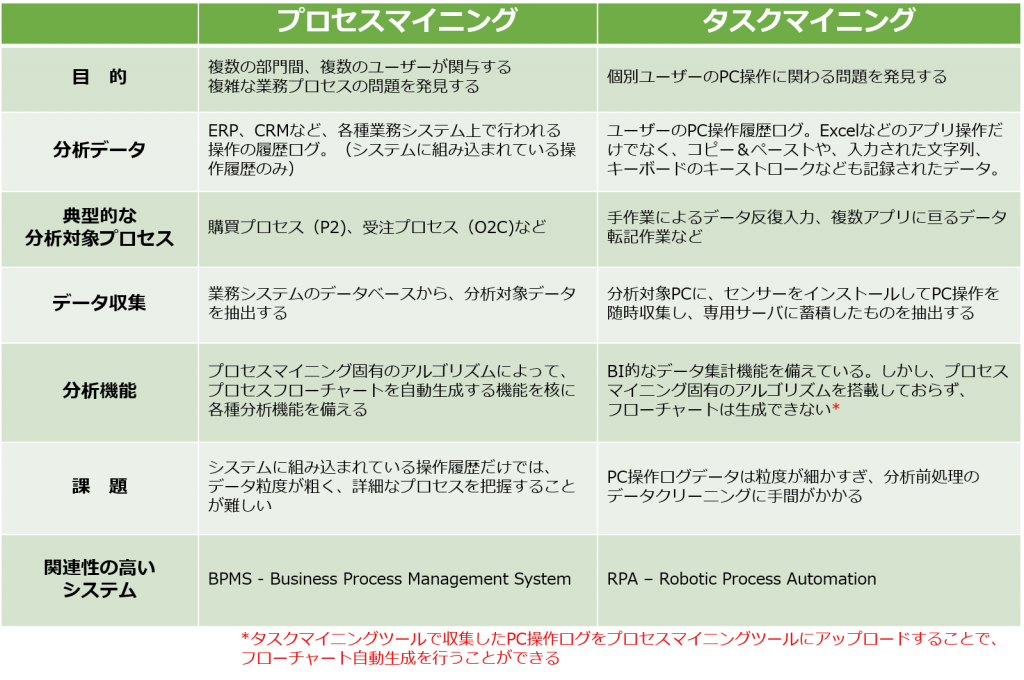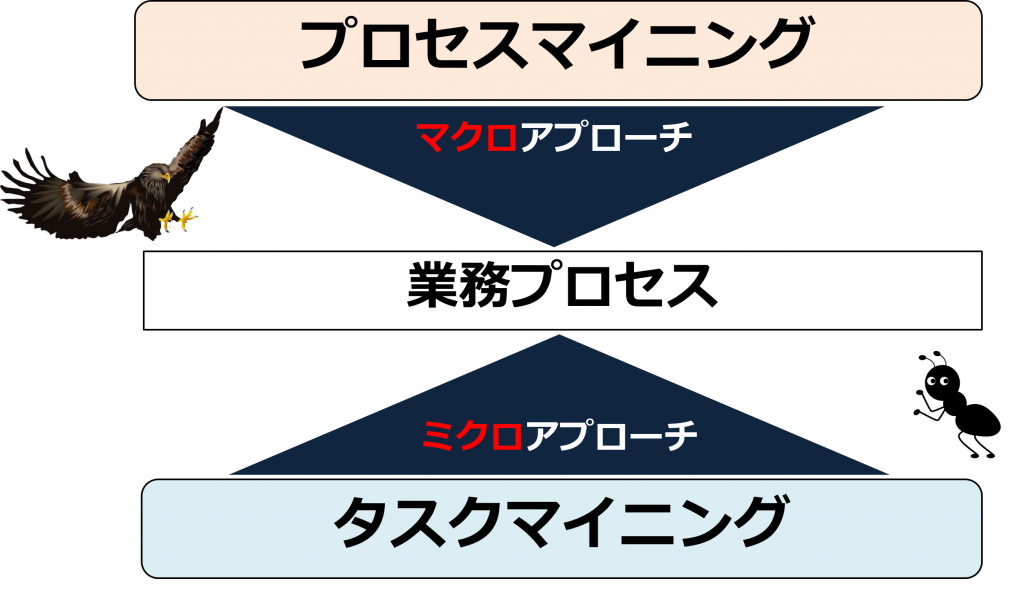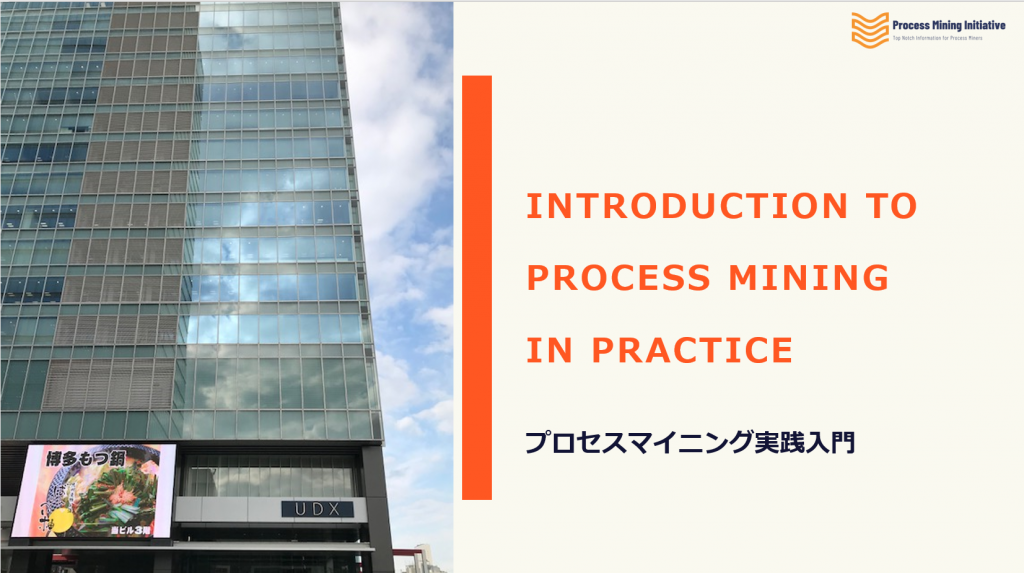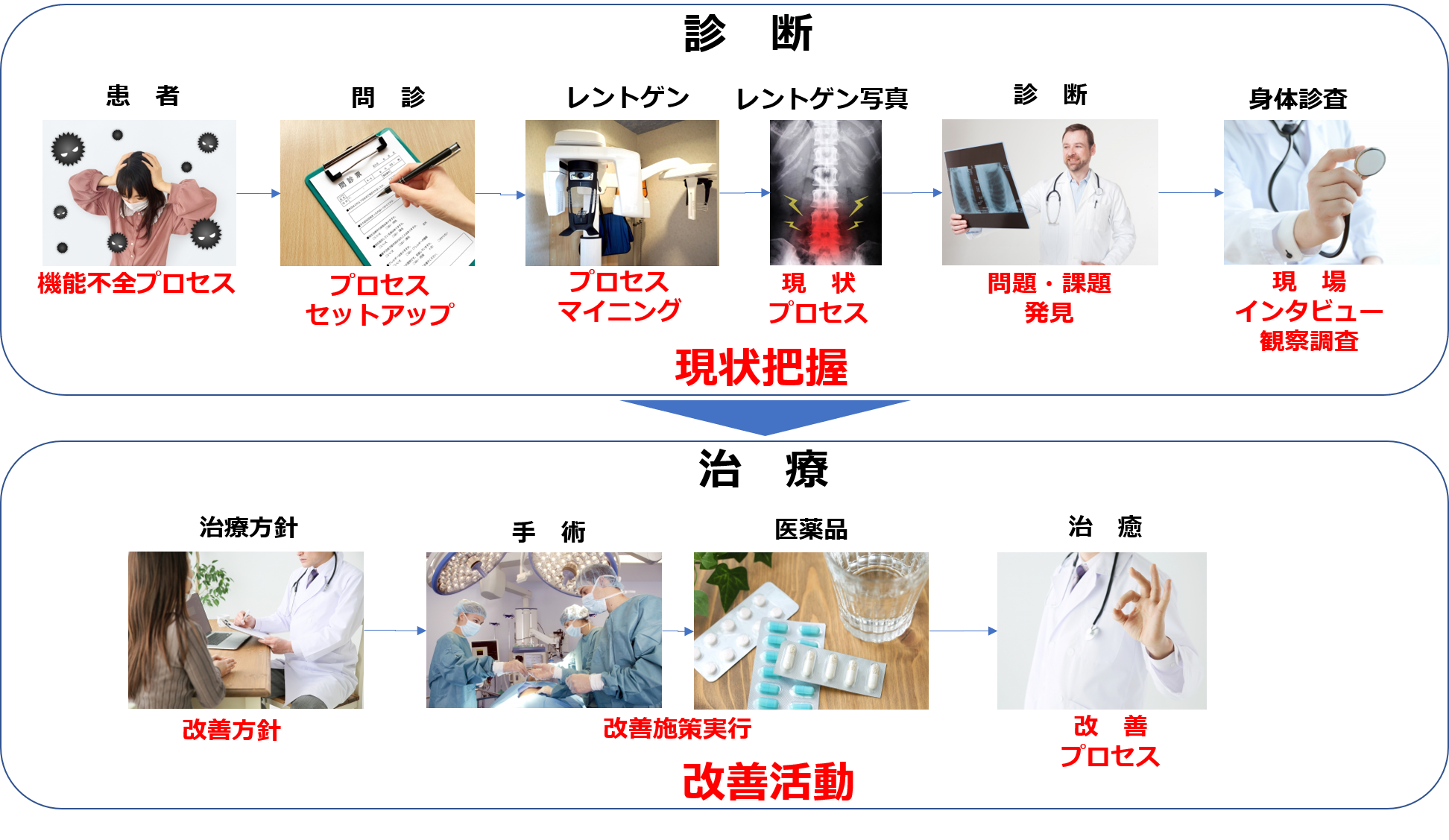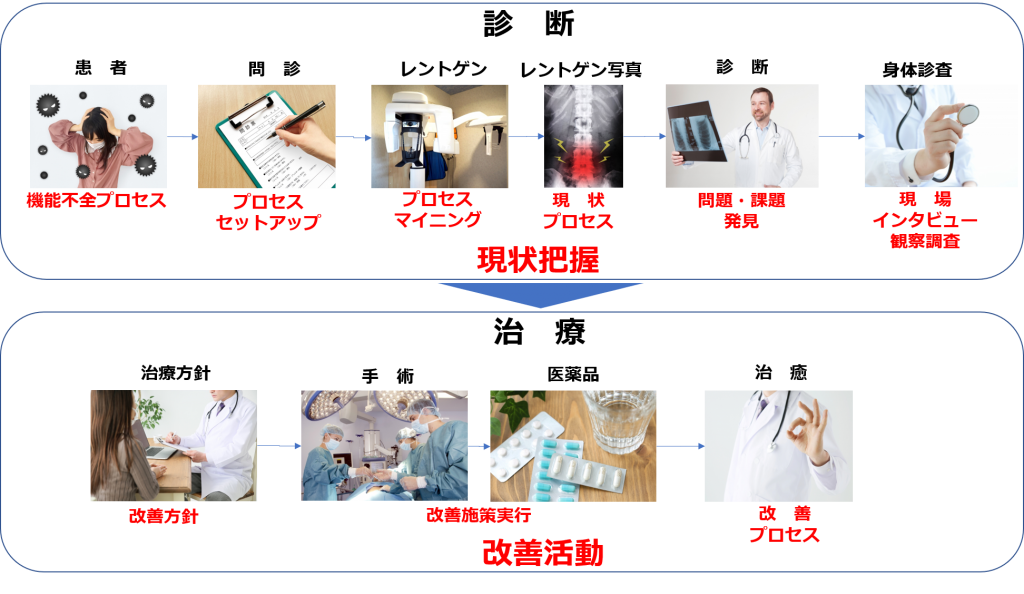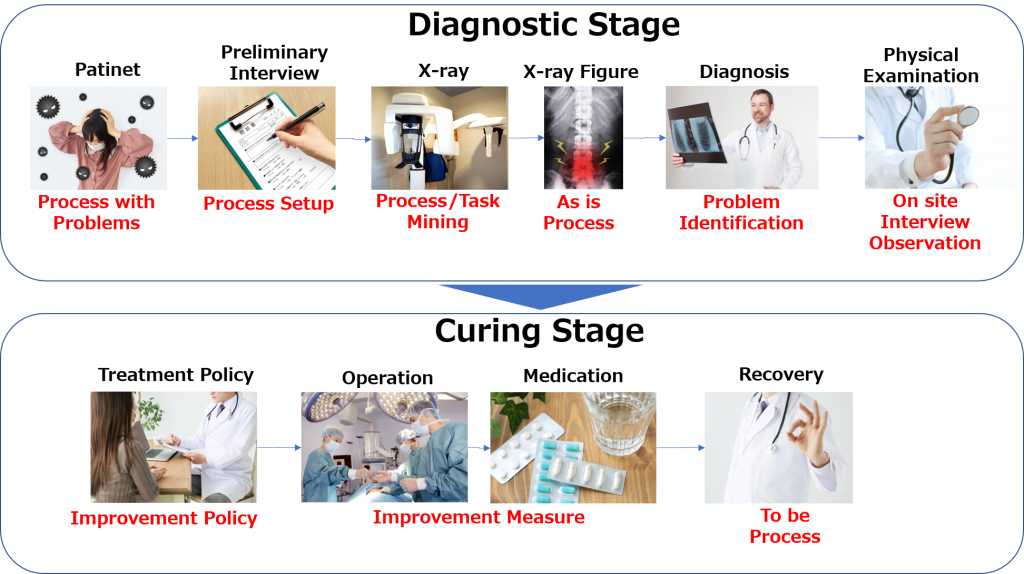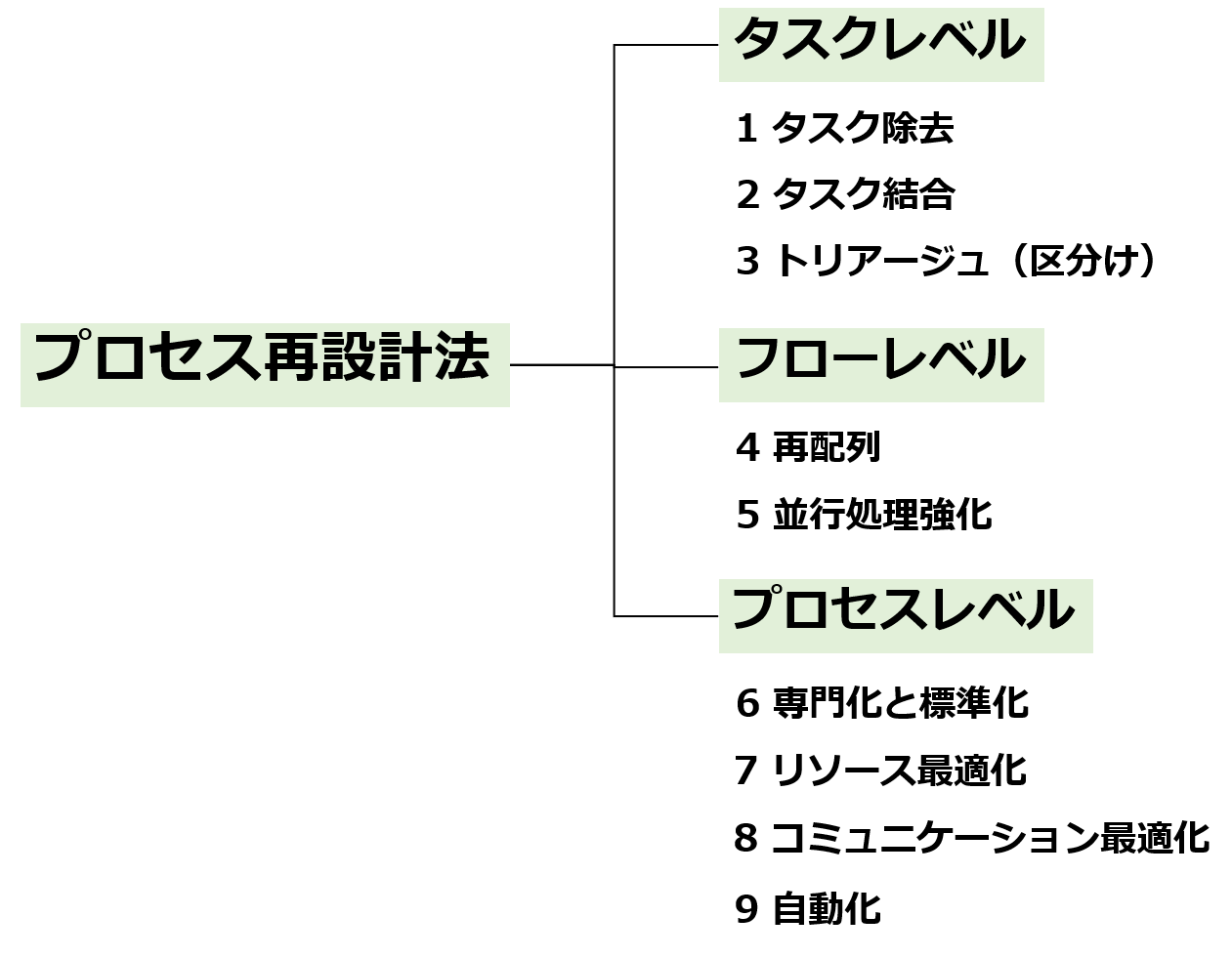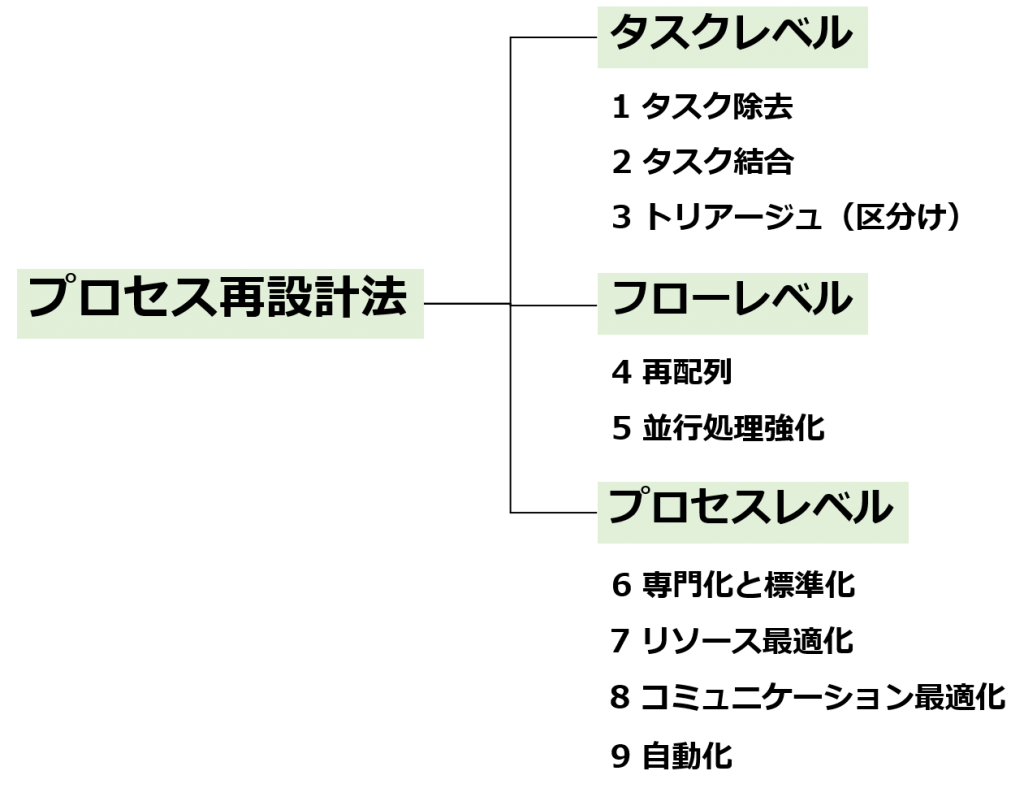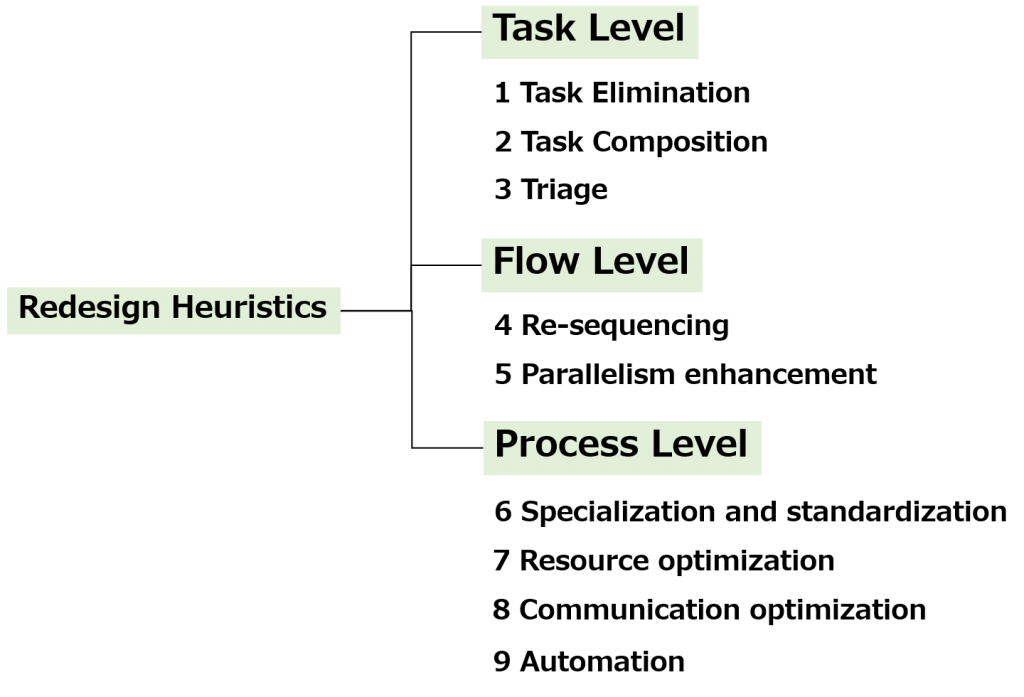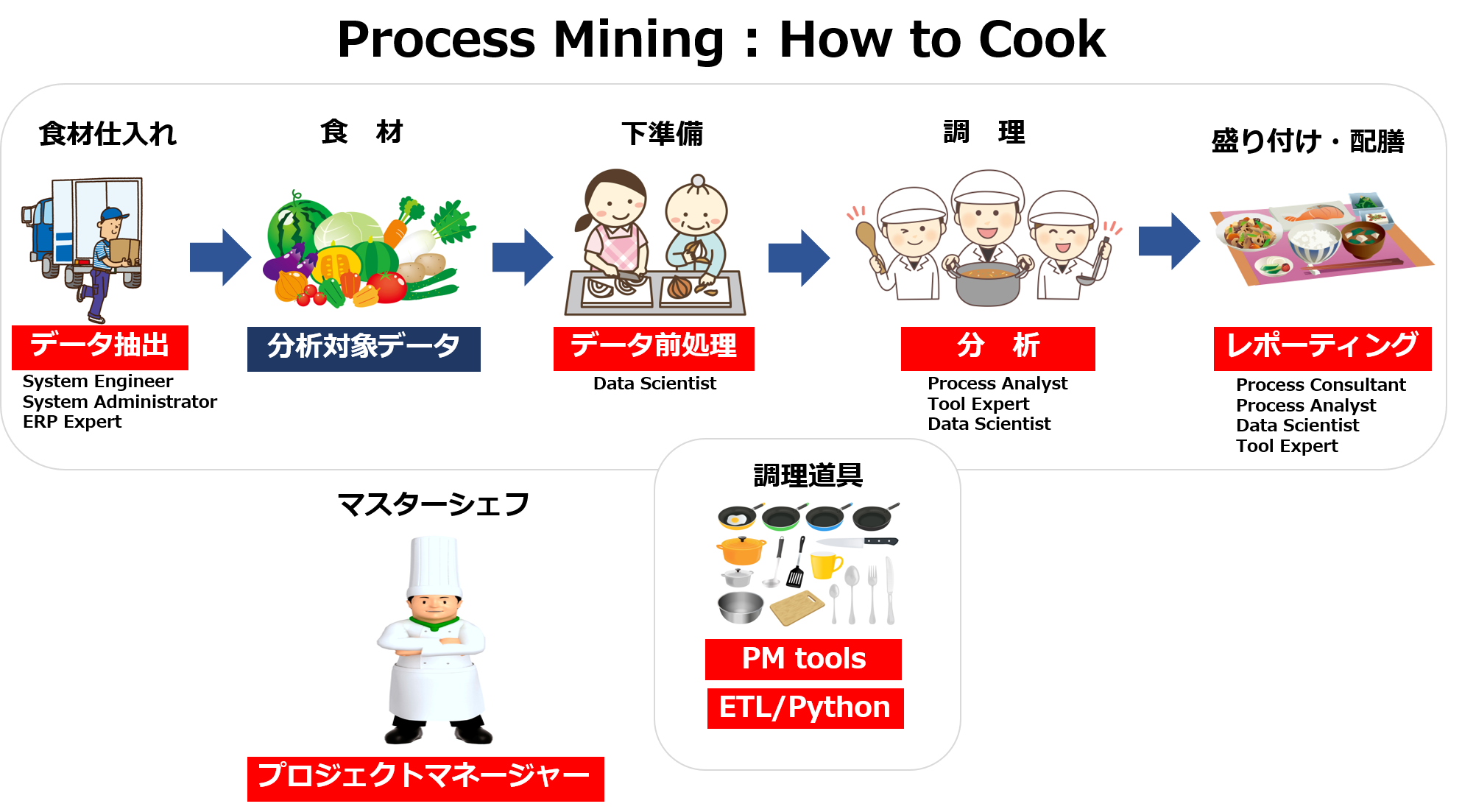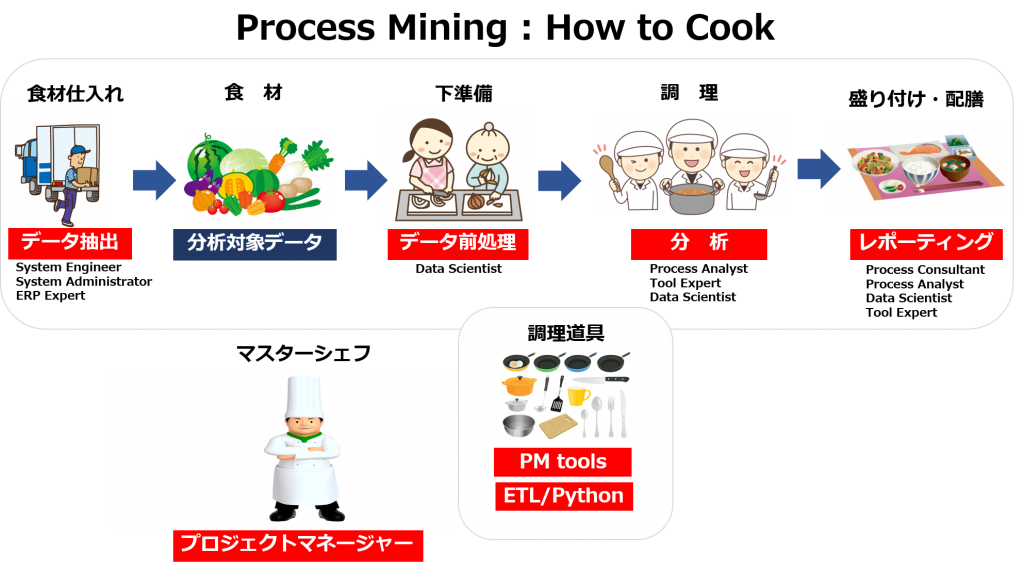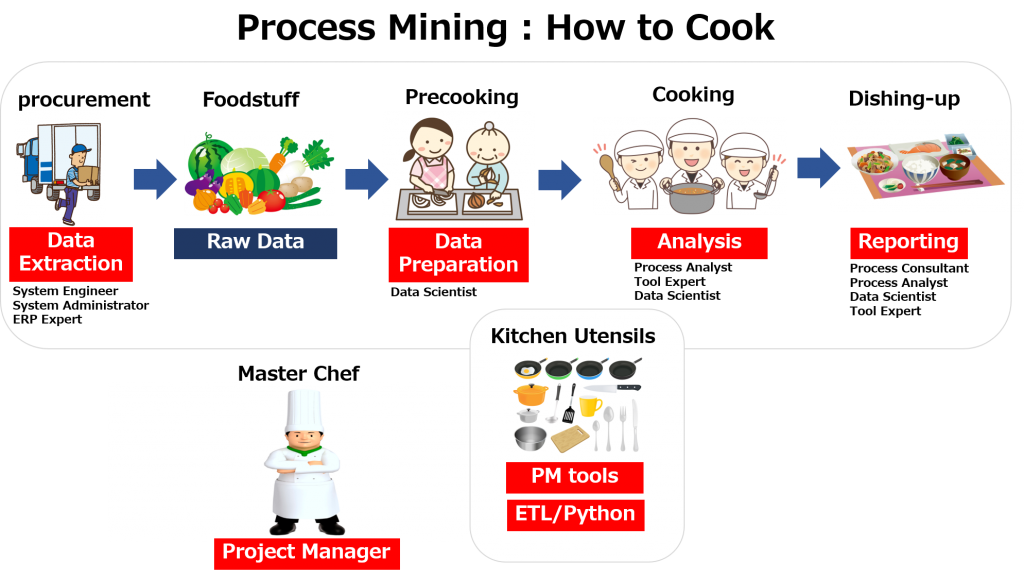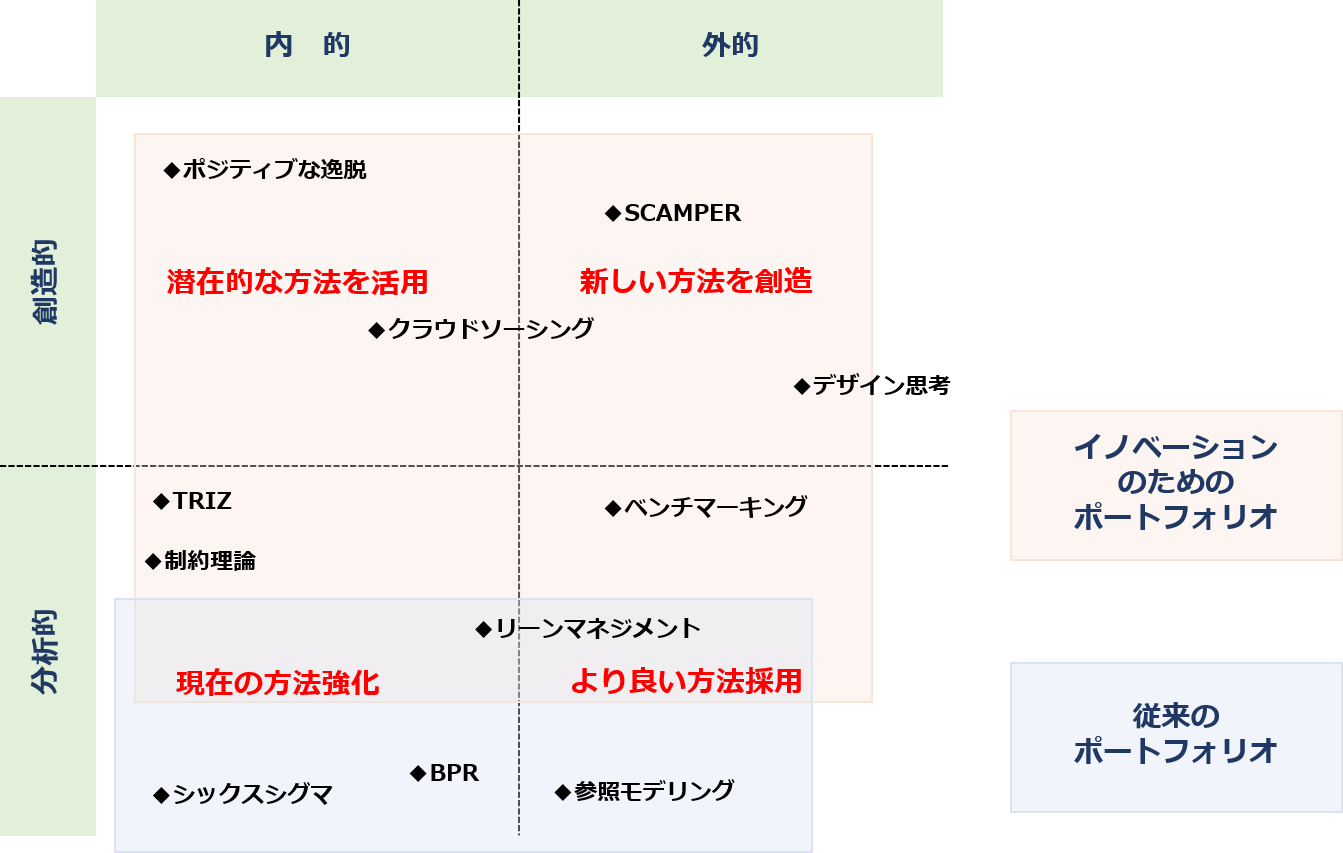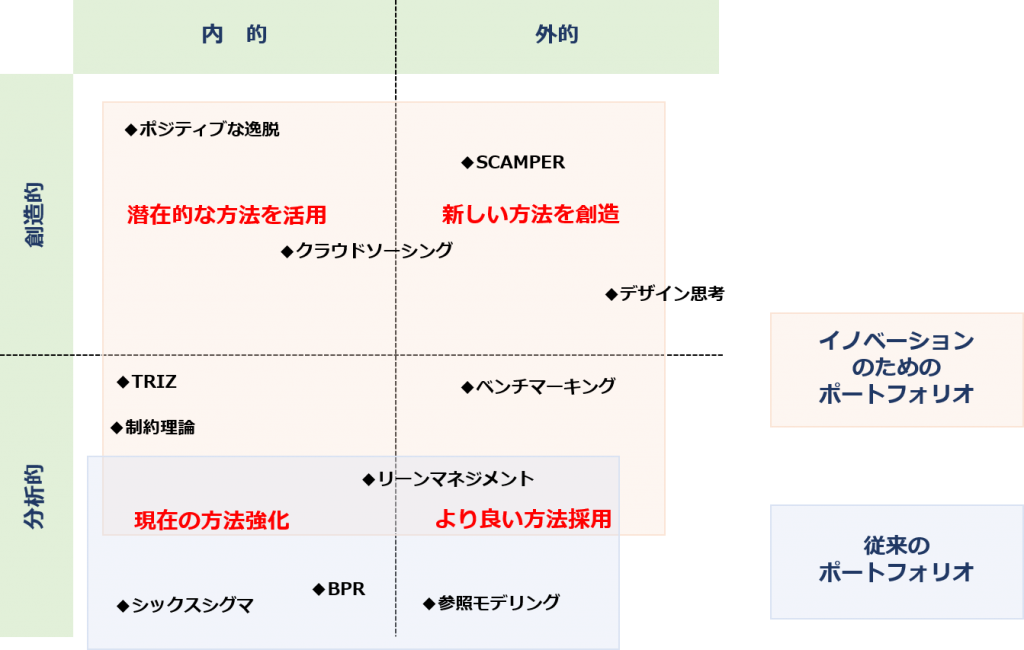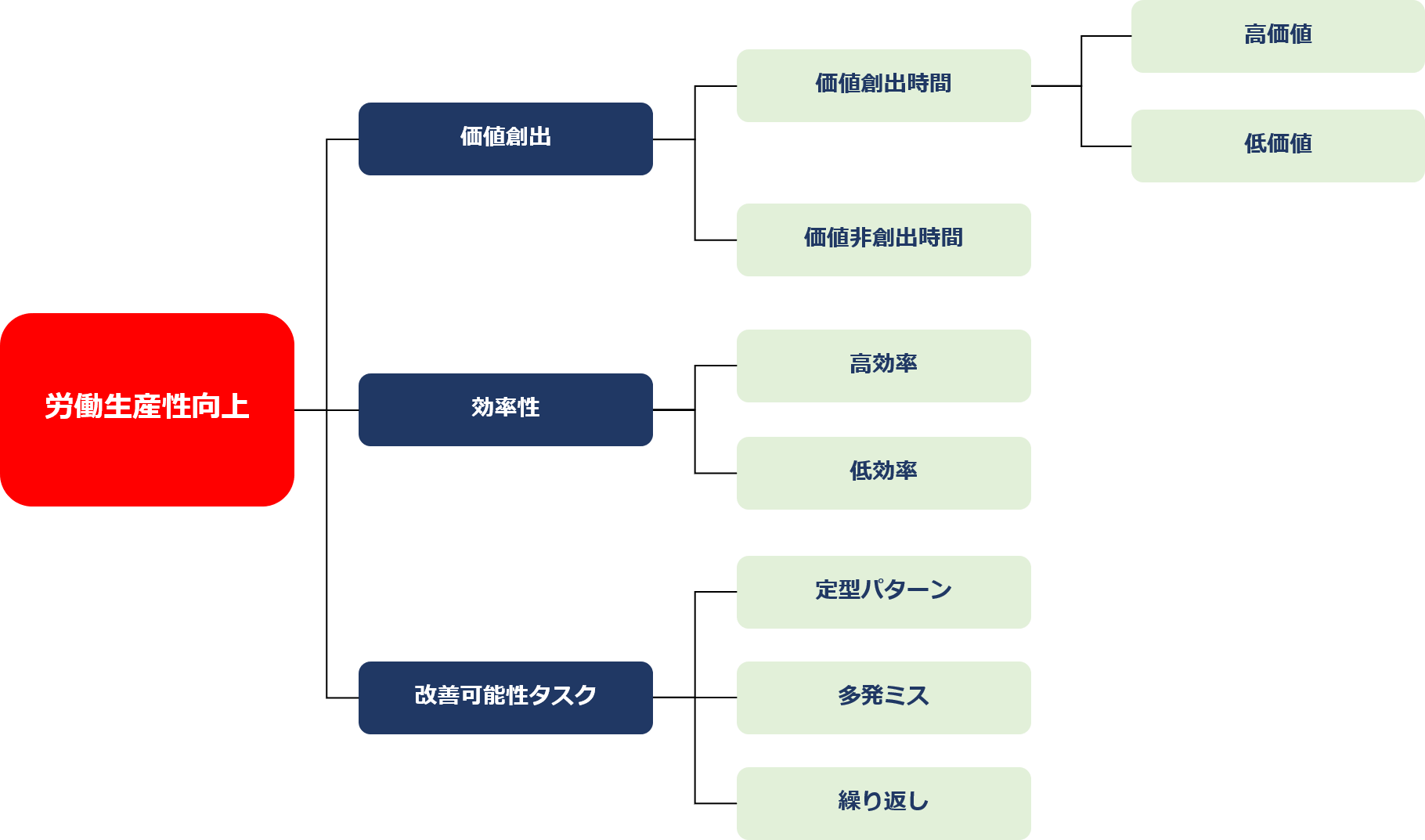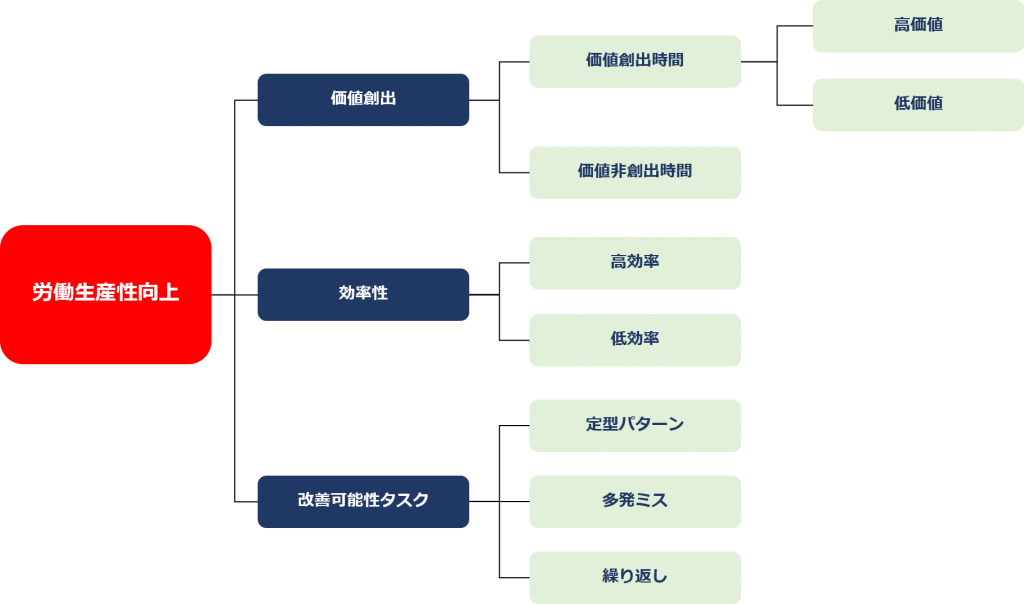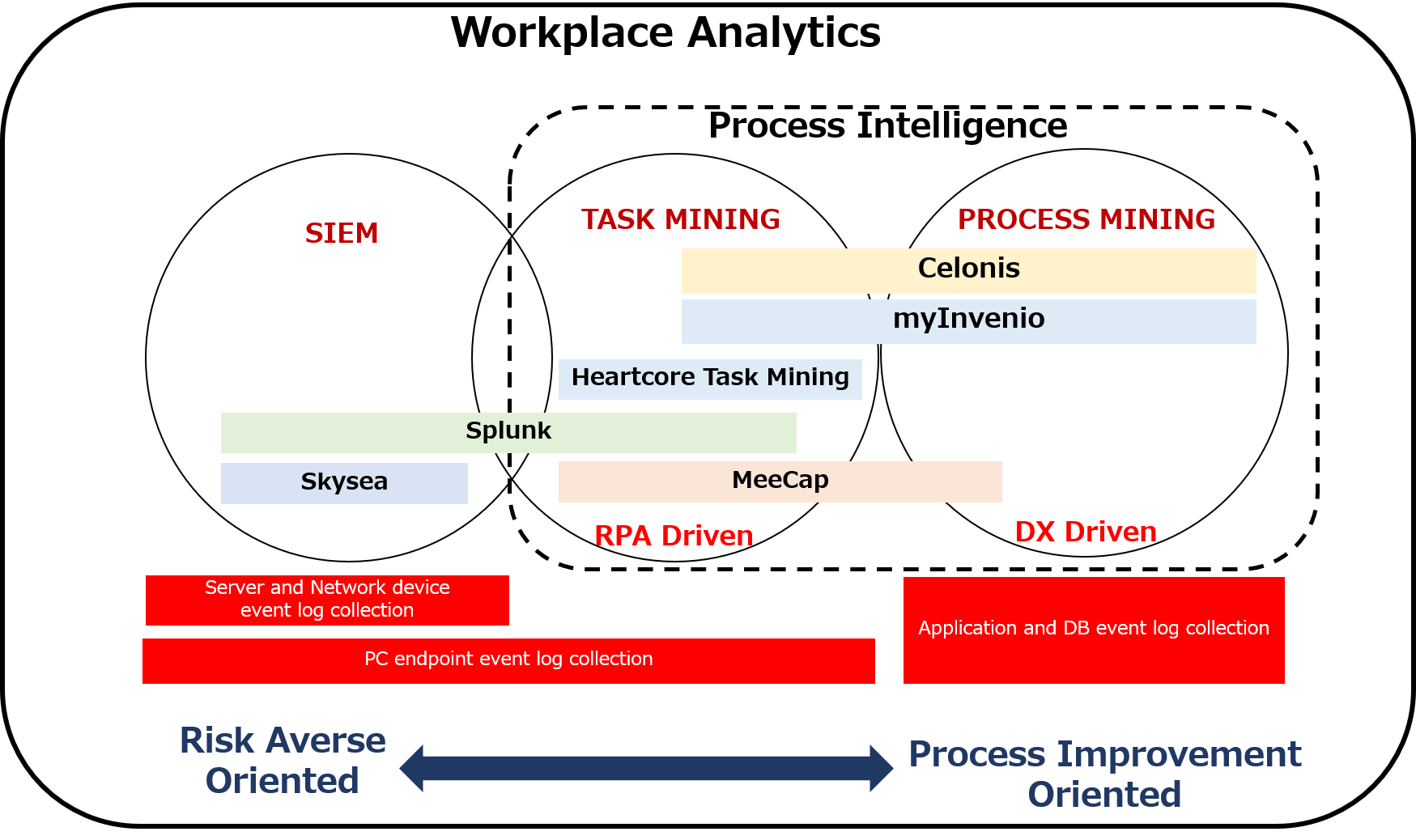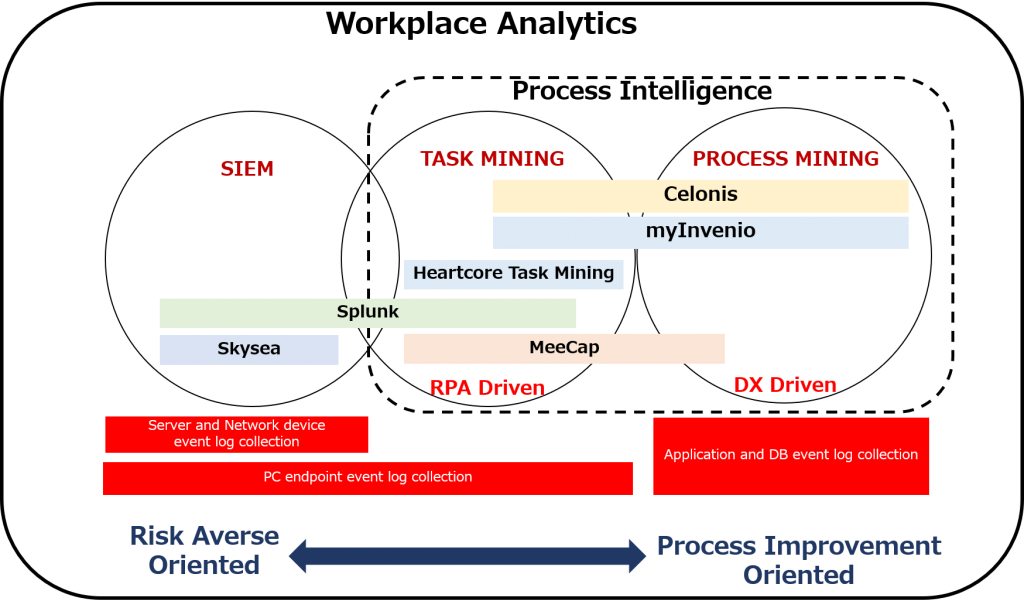当記事は、Tartu大学教授、Marlon Dumas氏の掲載許諾を得て日本語に翻訳したものです。日本語での理解がしやすいよう、多少補足・意訳している箇所があります。日本語版の文責はすべて松尾にあります。
Marlon Dumas氏は、BPM(Business Process Management)、Process Miningの研究者として世界的に著名です。オープンソースのプロセスマイニングツール、「Apromore(アプロモーレ)」を開発販売するApromore Pty Ltdの共同創業者でもあります。
また、世界の多数の大学において、BPMの教科書に採用されている『Fundamentals of Business Process Management』の共著者です。なお、『Fundamentals of Business Process Management』の日本語版が2022年中に刊行予定です。
The Road from Process Mining to Augmented Business Process Management
プロセスマイニングから拡張ビジネスプロセスマネジメントへ
– Marlon Dumas, Professor at University of Tartu | Co-founder at Apromore
ビジネスプロセスマネジメント(BPM)の分野において、2021年はわくわくする一年となった。プロセスマイニング、タスクマイニング、デジタルプロセスツイン、予測プロセスモニタリングなどの分野で、導入の成功事例や報告が相次いだ。
そして、これからやってくるものがまだある。私たちは、BPMに対する新しいアプローチの誕生を目の当たりにしようとしているのである。データ分析と人工知能(AI)の手法を活用して、継続的なプロセス改善を実現するアプローチである。私たちはこのアプローチを拡張BPM – Augmented BPM –と呼んでいる。
2022年には、拡張BPMの方向にさらに歩みを進めることになるだろう。この記事では、拡張 BPMの出現をもたらす潮流と、これらの潮流から、組織がどのように利益を得られるかを探っている。
拡張 BPMとは?
拡張 BPMとは、データ分析とAIに基づき、プロセスの設計時と、プロセス実行時の両方でプロセス改善の意思決定を行う、ビジネスプロセス管理のアプローチである。
拡張BPMは、個々のタスクの実行や意思決定の自動化(例:機械学習コンポーネントを使用して顧客の苦情を分類する)に、分析やAIを使用する以上のものである。それは、分析とAIを全面的に利用して、ビジネスプロセスを継続的に監視し、適応させ、また再設計することである。
拡張 BPM ピラミッド
拡張 BPMがカバーする範囲をよりよく理解できるよう、図1に示したような「ケイパビリティ(能力)のピラミッド」として概念化した。
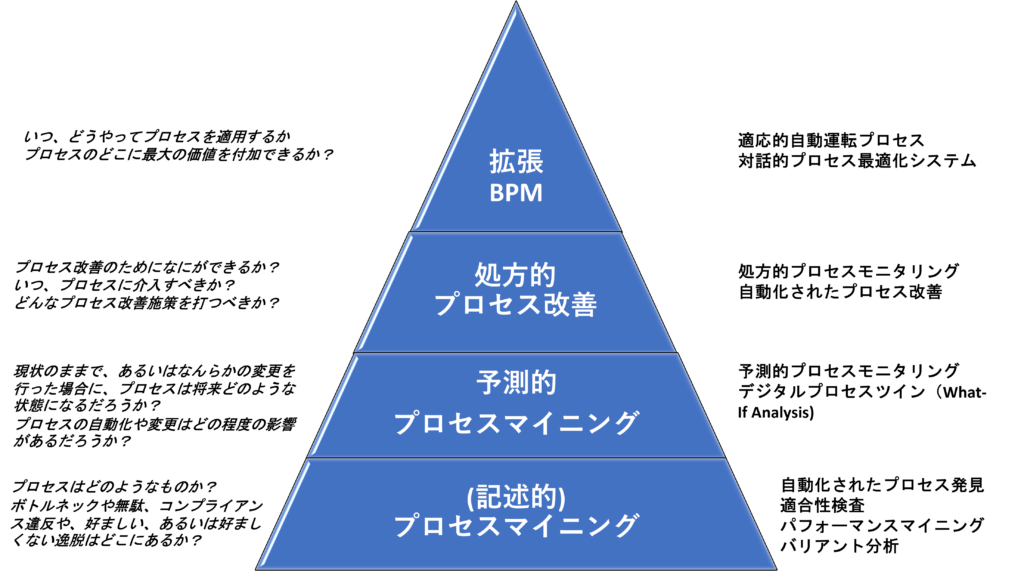
最下層には、「記述的プロセスマイニング – Descriptive Process Mining -」がある。(これは、従来のプロセスマイニングの領域である)プロセスマイニングは、企業システムから抽出したデータセットを用いてビジネスプロセスを分析する技術である。これらのデータセットはイベントログと呼ばれる。イベントログは、ビジネスプロセスの文脈においては、アクティビティ(またはアクティビティ内のステップ)の実行を捕捉した記録の集合体である。
プロセスマイニングには様々な技術が含まれるが、これらは4つのケイパビリティ領域に分けられる。
自動化されたプロセス発見 – Automated Process Discovery
データからプロセスモデルを発見し、プロセスの主な経路や例外を明らかにし、無駄(反復・手戻りや、過剰な処理など)を浮き彫りにする機能。
適合性検査 – Conformance Checking
コンプライアンスルールの違反(請求書のない購買発注など)や、観測された実際の手順と、準拠すべき規範的手順との乖離など、望ましい手順からの逸脱を検出する機能。
パフォーマンス・マイニング – Performance Mining
定量的なパフォーマンス指標をプロセスの要素に結びつける機能。例えば、SLA(Service level Agreement)に対する違反に関わるボトルネック、反復・手戻りの繰り返しがもたらす過剰なコストや無駄を明らかにする。
バリアント分析 – Variant Analysis
異なるサブセットのケース(例えば、地域別)でプロセスがどのように実行されているかを比較することにより、プロセスにおける好ましい、あるいは好ましくない逸脱を識別する機能。
これらの機能により、ボトルネック、反復・手戻り、コンプライアンス違反などの摩擦が起きている箇所を特定し、その原因やKPI(主要業績評価指標)への影響を調査することができる。これらの機能を利用して、継続的なプロセス改善に取り組んでいる企業は多い。
記述的プロセスマイニングは、それ自体が価値のある能力であるが、その長期的な価値は、それが他の豊富な能力につながる扉を開くことにある。実際、組織がプロセスマイニングのために収集した同じデータセットを使って、将来何が起こるかを教えてくれる予測モデルを構築することができる。
これにより、拡張 BPMピラミッドの第2層である「予測的プロセスマイニング – Predictive Process Mining – 」にたどり着く。記述的プロセスマイニングでは、プロセスが過去にどのように実行されてきたかを理解ができる。一方、予測的プロセスマイニングでは、プロセスが将来どのように展開するかを予測する。予測的プロセスマイニングには2つの機能がある。
予測的プロセスモニタリング – Predictive Process Monitoring
プロセスの将来の状態を予測する機能。例えば、O2C(Order-to-Cash:受注から入金まで)のプロセスでは、顧客が注文した製品が時間通りに発送されるか、あるいは遅れて発送されるかを予測することができる。一般的に、予測的プロセスモニタリングは機械学習技術を用いて実装される。まず、過去のデータをもとに予測モデルを作成し、それをイベントストリーム(現在実行中のプロセス)に適用して将来どうなるかを予測する。
デジタルプロセスツイン – Digital Process Twin
プロセスを変更した場合の影響を予測すること。例えば、ERPシステム上で実行されるO2Cプロセスを考えてみよう。記述的プロセスマイニングを適用することで、プロセスの包装工程でボトルネックが発生し、多くの遅延が発生していることが判明するかもしれない。ここで、プロセスマイニングと機械学習を用いて、デジタルプロセスツイン(DPT)と呼ばれるプロセスの複製を構築する。そして、このDPTを用いて、包装工程にスタッフを追加投入した場合に何が起こるかをシミュレーションする。DPTでは、このような変更やその他の実行可能な変更が納期遅れに与える影響度合いを推定することができる。管理者は、この機能のおかげでプロセス改善行動のROIを推定し、より効果な改善行動を見出すことができる。
プロセスがこの先どうなるかを予測することは役に立つ。しかし、予測が価値を生むのは、それに基づく改善行動があってこそだ。これが、拡張 BPMピラミッドの第3層である「処方的プロセス改善 – Prescriptive Process Improvement- 」である。処方的プロセス改善とは、予測をアクションに変えることであり、1つまたは複数のKPIに関して、ビジネスプロセスのパフォーマンスを改善するために最適なタイミングで実行される仕組みである。
この層では、「プロセスマイニング」から「プロセス改善」へと焦点が移る。プロセスマイニングでは、データからパターンを発見し、そのパターンを使ってプロセスを説明したり、予測を立てたりすることに焦点を当てる。ピラミッドの第3層では、パターンは二の次となり、代わりに、改善アクションを扱う。
処方的プロセス改善には2つの機能がある。
処方的プロセスモニタリング – Prescriptive Process Monitoring
1つまたは複数のKPIに関して、プロセスのパフォーマンスを最適化するためのアクションを、リアルタイムまたはそれに近い状態で推奨する機能。例えば、ある処方的プロセスモニタリングシステムが、バッチ製品の出荷が遅れる可能性を検出したとする。そのとき、遅延の影響を最小限に抑えるため、当該製品を注文した顧客に連絡して、製品を2つのバッチに分けて発送する選択肢を提案することを推奨できるだろう。
自動化されたプロセス改善 – Automated Process Improvement
例えば、不良率やサイクルタイムを最小限に抑えつつ、コストを削減するなど、相反するKPI間のトレードオフを実現するために、プロセスに変更を加えることを推奨する機能。自動プロセス改善システムは、週の初めに発生する特定のボトルネックを軽減するため、一部の担当者の割り当てルールや作業スケジュールを変更するようにプロセスオーナーに提案したり、誤発注を防ぐため、一部の発注書に追加の検証ステップを実行するように提案したりする。
上記のようなレコメンデーションは、行動と結果の間の因果関係を発見し、その関係を利用して、プロセスのどのような場合に(いつ)特定の行動を行うのが最適かを判断する因果推論と呼ばれる技術を用いて作成できる。
処方的プロセス改善では、人間のプロセス参加者に対し、機械が可能なアクションを提案する。人間の参加者は、これらの推奨事項を適用するか、あるいは無視するかを決定する。言い換えれば、システムと人間の参加者の間のやりとりは一方通行である。もし、改善アクションが、人間の参加者とAIとの会話の結果だったらどうだろうか?
これで4層目が見えてきた。「拡張 BPM – Augmented BPM – 」である。拡張 BPMは、ビジネスプロセス実行システムの自律性と、マシンと人間の参加者との間での豊かな対話が行われるという点で、処方的プロセス改善を超えている。拡張 BPMはまだ始まったばかりの概念であるが、すでに2つの特徴的なテーマを特定することができる。
対話的プロセスの最適化 – Conversational Process Optimization
プロセスのパフォーマンスが低下する状況を自動的に検出し、そのパフォーマンス低下の原因を人間のプロセス参加者(プロセスオーナーなど)に説明し、その対策を人間の参加者と議論する機能。例えば、対話型プロセス最適化システムが、ある種類の出荷がしばしば遅れることを検出したら、プロセスオーナーにこれらの出荷の輸送ルート変更をすべきであると提案する。人間の参加者は、ルート変更オプションのうち、いくつかは費用が増える可能性があるために採用しないかもしれない。あるいは、顧客に対して、複数の輸送ルートオプションを提供すると決定するかもしれない。当システムは、顧客の所在地に応じて、各顧客に複数の選択肢を提供することができる。
適応型自動運転プロセス – Adaptive Self-driving processes
自動化されたシステムが、プロセスの中で起こりうる次のアクションを判断し、次に取るべきアクションを決定する。また、人間への引継ぎが必要な状況を検出できる能力のこと。例えば、過去の実行データに基づいて、発注書を受け取った際に行うべき検証手順をシステムが決定することができる。これまでに見たことのない新しいタイプの購買注文をシステムが検出すると、人間の担当者に引き継ぎ、その担当者が、この新しいタイプの注文に対してどの検証を行うべきかを決定する。当システムは担当者の判断を記録しておおり、このタイプの発注書を再び受け取ったときにはそれを適用する。
ピラミッドのこの最後の層では、「プロセス改善」から「BPM」へと移行している。拡張BPMは、パターンを発見したり、プロセス再設計の提案を行うだけではない。拡張 BPMは、BPMのライフサイクル全体を扱うアプローチである。
拡張 BPMの恩恵を受けるために、自社は何ができるか?
多くの読者にとって、拡張されたBPMはあまりにも未来的であり、すぐに行動を起こすには値しないと思われるかもしれない。しかし、ピラミッドの最初の二つの層は、すでに実際に広く活用されている。また、第3の層を支える技術は急速に進化しており、すでに他の分野で成功を収めている。拡張 BPMのピラミッドを登ることで得られる利益は極めて大きい。ピラミッドを登るステップを踏まない組織は、取り残される可能性が高くなるだろう。その機会損失は無視できないほど大きい。
ピラミッドに沿った取り組みを考えている企業は、その過程で重要な3つのポイントを心に留めておくとよい。
1.基礎を固め、登り始め、登り続け、先延ばしにしない。
多くのマネージャーは、「データがない」「データが十分ではない」と言って、プロセスマイニングの導入を先延ばしにする。 確かに、プロセスマイニングのためのデータを得ることはしばしば困難である。しかし、その効果は数千もの成功事例で繰り返し実証されている。プロセスマイニングを行うためのデータを得ることで、多くの扉が開かれる。今日、プロセスマイニングに使用されたデータは、明日には予測的プロセスモニタリングや、デジタルプロセスツインの構築に使用することができる。データの収集と前処理という障害を乗り越えれば、その可能性は無限に広がる。なお、タスクマイニングは、企業システムでは、データ収集が行えない場合に、データ収集のための別の方法を提供することに留意されたい。
2.レイヤを飛ばしてはいけない。
BPMピラミッドの下層部は、上層部からビジネス価値を引き出すための基盤となる。上の層の機能を採用することで最大限の利益を得たいと考える組織は、下の層をマスターする必要がある。
3.戦略との整合を取り、段階的にガバナンスを構築する。
プロセスマイニング、予測モニタリング、また処方的プロセス改善の取り組みは、組織の戦略的優先事項に基づいて行われる必要がある。拡張BPMピラミッドの機能は、何よりもまず、組織にとって重要なビジネスプロセスに適用されるべきである。また、これらのテクノロジーは、1つのプロセスずつ段階的に採用することが重要だ。時間をかけて、ピラミッドのテクノロジーが予測可能、かつ繰り返し価値を生み出すことを保証するために、ガバナンス構造が必要である。しかし、そこに到達する前に、社内でいくつかの成功事例を作り、幹部の支持を得る。そうして、拡張BPMピラミッドのすべての能力が具体的な価値を生み出すことを示すことで、彼らの支持を維持することが重要である。
免責事項、承認およびライセンス
この作品は、タルトゥ大学の教授として書かれたものです。私の研究は、欧州研究評議会(PIXプロジェクト)とエストニア研究評議会から資金提供を受けています。また、オープンソースのプロセスマイニングソリューションを提供するApromoreの共同設立者でもあります。
この記事はクリエイティブ・コモンズ 表示一般ライセンス CC-BY 4.0 (CC-BY 4.0)の下でライセンスされています。
 Marlon Dumas – Professor at University of Tartu | Co-founder at Apromore
Marlon Dumas – Professor at University of Tartu | Co-founder at Apromore

